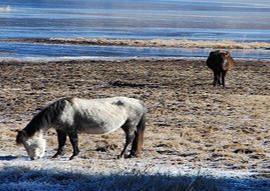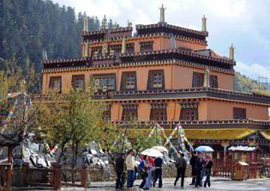The Nature Conservancy has helped China achieve a conservation landmark: the establishment of that country's first national park, which will also serve as a model for a new Chinese national park  system. system.
The new park- Pudacuo National Park in China's Yunnan Province-is located in one of the most biodiverse regions of the world. While the region comprises only 0.7 percent of China's land area, it contains more than 20 percent of the country's plant species, about one-third of its mammal and bird species and almost 100 endangered species.
But the establishment of Pudacuo National Park is significant in other ways as well:
It increases conservation in the region by incorporating 10 times more land into an area that was formerly a nature reserve;
It introduces skilled park management techniques to help abate threats to biodiversity in the area;
It provides a source of environmental education for local communities; and
It provides economic benefits to local communities through park-related jobs and ecotourism.
The Conservancy supported the Chinese government's efforts to establish Pudacuo in June 2007 by introducing the concept of the national park system to officials and advising the government on how best to establish this kind of protected area.
"Pudacuo National Park is significant," says Jerry Chen, project manager of the Conservancy's Yunnan program. "More land is protected through this new model than could have been done before."
A National Park for China
By any standard, Pudacuo qualifies as a natural wonderland. It contains endemic species of fish found no where else in the world, rare and beautiful orchids, black-necked cranes and taxus yunnanensis, a yew whose extracts are indispensable to the creation of many cancer drugs.
While there are more than 2,300 nature reserves in China, only a fraction are in areas of critical biological importance, and an even smaller number are well-managed. Pudacuo will meet the standards for national parks established by The World Conservation Union (IUCN) - and also advance both protection and sustainable development of this ecologically significant section of Yunnan Province.
The Conservancy introduced the national park system to China as part of a partnership with the  Chinese government. The partnership included study tours for local, provincial and national Chinese government officials to such places as Yellowstone National Park in the United States and Komodo National Park in Indonesia, where they observed examples of protected-area management and learned about park design, infrastructure development and tourism management. Chinese government. The partnership included study tours for local, provincial and national Chinese government officials to such places as Yellowstone National Park in the United States and Komodo National Park in Indonesia, where they observed examples of protected-area management and learned about park design, infrastructure development and tourism management.
Pudacuo National Park is also an example for local Chinese governments of how a well-managed park can be both ecologically and economically valuable. For example, the park helps the local economy through providing neighboring residents jobs in park management.
"What…distinguishes this park [from a typical Chinese nature reserve] is that the local communities are already benefiting from it because they are preferentially employed for jobs within the park," says Zhu Li, communications manager for the Conservancy's China Program. "The national park system embodies the conservation ideal of 'nature for people' rather than 'nature from people.'"
The Conservancy has provided critical support in this effort-drawing on a history of conservation success in the Yunnan Province in which it has specifically linked poverty alleviation and human well-being with environmental conservation and sustainability.
Tourism is another key aspect of Pudacuo's development. Nestled in the mountains of southwest China, the park is an integral part of the Three Parallel Rivers Scenic Area, a UNESCO World Heritage Site and one of China's most popular tourist destinations.
By helping the Chinese government properly plan for and manage tourism through this model national park, the Conservancy is providing the government with an opportunity to reduce the impacts of tourism and other threats to biodiversity in one of the world's most ecologically valuable natural areas.
And the Conservancy has also worked with government officials, the academic community and non-profit partners to address the lack of adequate resources and training that prevent reserve managers from being able to effectively manage their parks.
"We are also working with communities inside and outside of the park to build participation through co-management, alternative energy, green building and ecotourism," says Chen. "We want to abate the threats to biodiversity in this region and help communities benefit from the establishment of a national park." |
